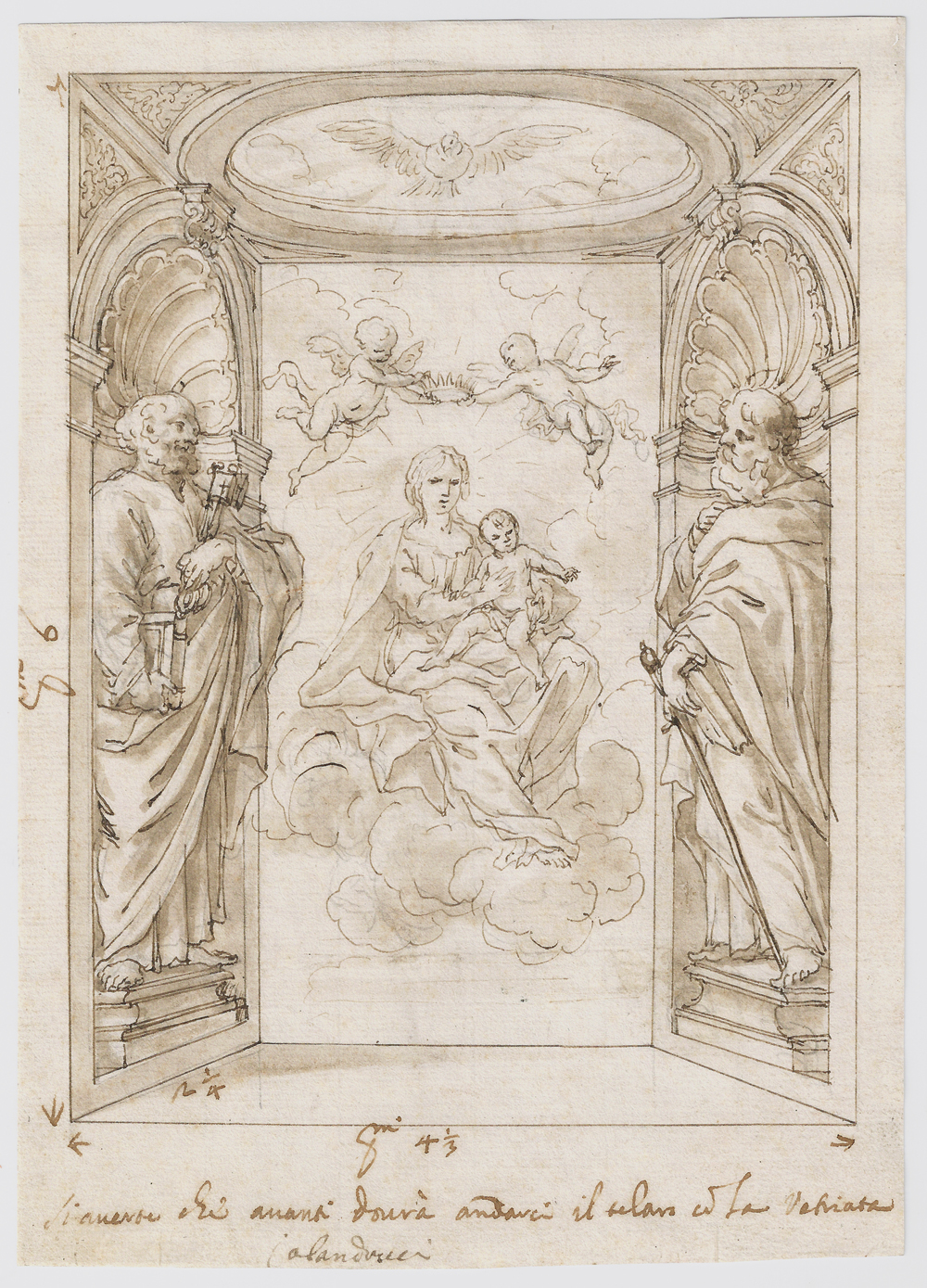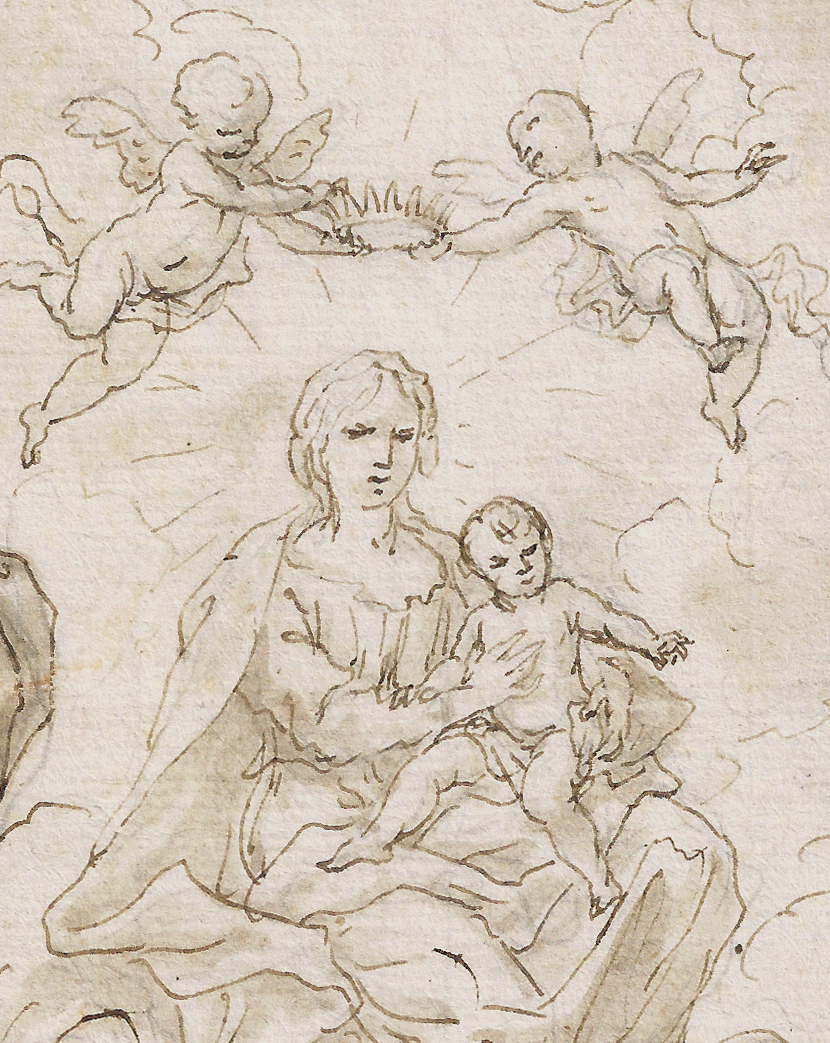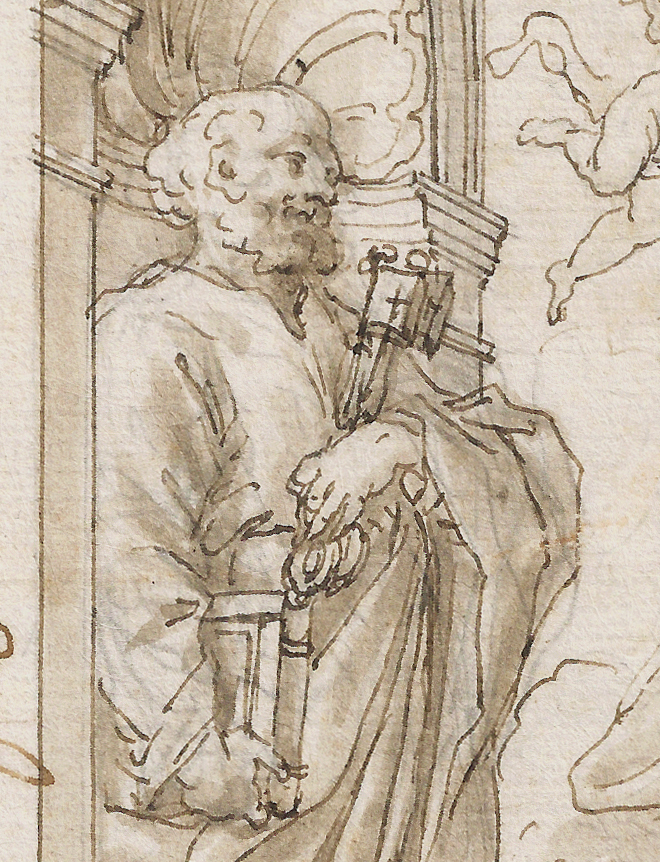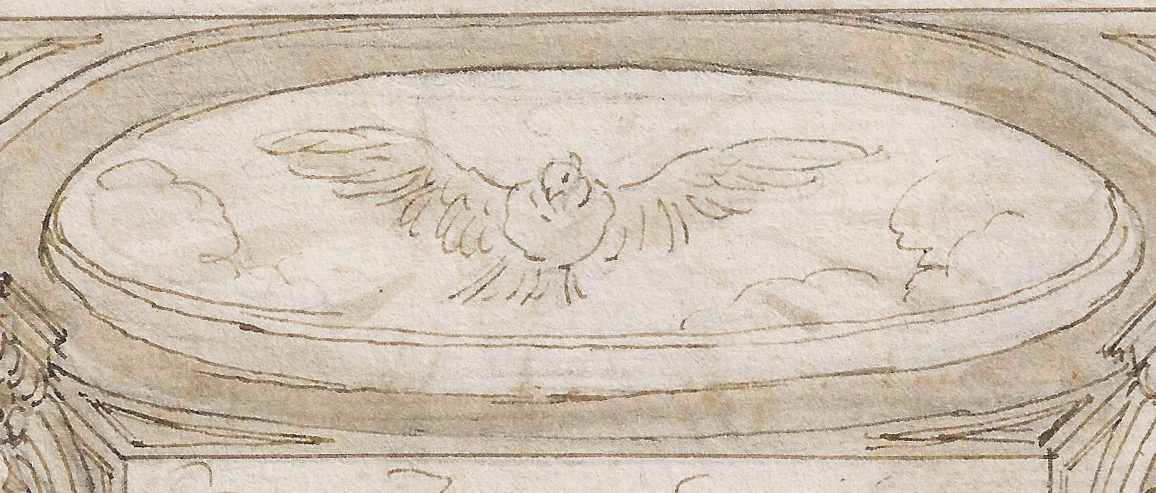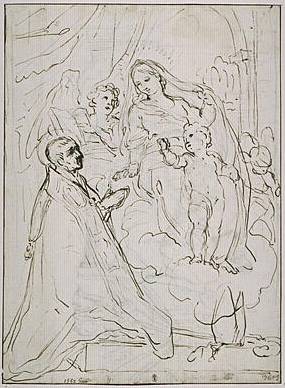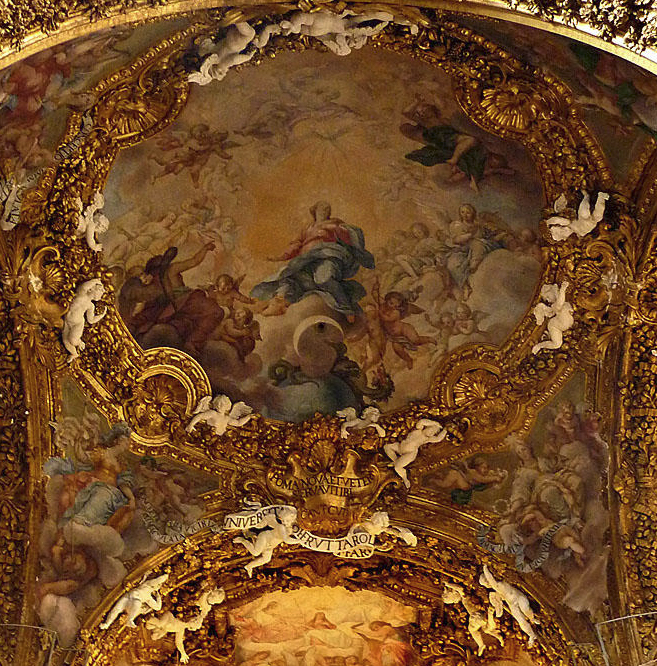GIACINTO CALANDRUCCI (Palermo 1646 – 1707 Palermo)
Giacinto Calandrucci (Palermo 1646 – 1707 Palermo)
The Madonna and Child in Glory, flanked by statues of Sts Peter and Paul, in niches, the Holy Ghost above
Pen and brown ink and wash over black chalk, rubbed with red chalk (for transfer?) on the verso, 243 x 174 mm (9.6 x 6.8 inch)
Annotated with measurements in pen and brown ink, and inscribed and signed Si averti che avanti dovrà andarci il telaro co la vetriata / Calandrucci
Provenance
~ With Armando Neerman, London, 1972
~ Purchased from the above in 1973 by Ralph Holland (1917-2012), until 2013
Exhibited
~ Landscape and Architecture in Italy, London (Armando Neerman) 1973, no. 18,
~ Italian and Other Drawings, 1500-1800, Newcastle upon Tyne (Hatton Gallery) 1974, no. 86, reproduced pl. XXII
~ Italian and Other Drawings 1500-1800, London (Courtauld Institute Galleries) 1975, no. 57
~ Italian Drawings, 1525-1750, Newcastle upon Tyne (Hatton Gallery) 1982, no. 70
***
Giacinto Calandrucci was born in Palermo but trained in Rome, where he was first a pupil of the painter and engraver Pietro del Pò (1610-1692), who also came from Palermo, and then continued to the workshop of Carlo Maratti. Together with Guiseppe Passeri, Calandrucci became Maratti’s favourite pupils. He was associated with Maratti’s workshop for a long period and perfectly assimilated his master’s artistic idiom.1 In the 1680s Calandrucci executed various decorative frescoes in Roman palazzi, the Four Seasons in the Palazzo Lante; mythological frescoes in the gallery of the Palazzo Muti-Papazzurri; the decoration of the gallery of the Palazzo Strozzi-Besso; and a ceiling fresco, the Sacrifice of Ceres, in the Villa Falconieri at Frascati. He also painted idyllic pastoral scenes, among them two pictures at Burghley House, Stamford, England.
In addiction Calandrucci executed altarpieces and ceiling decorations for Roman churches, including the high altar, the Virgin with Child with Saints, a Baptism and ceiling decorations, all in the Cimini Chapel of S. Antonio del Portoghesi (from 1682), and other works in the S. Bonaventura (before 1686), S. Paolo della Regola (c. 1700) and the S. Maria dell’Orto (c.1700-05). In 1705 the artist returned to Palermo, where he began the decoration of the oratory of S. Lorenzo.
Of over fifteen hundred surviving drawings by Calandrucci, the great majority are in the Kunstmuseum, Düsseldorf, and in the Louvre.2 Many of his sketches record paintings that the artist planned and probably executed, though many of these have not been traced. Our drawing may for instance be compared with the Virgin and Child Appearing to a Sacred Bishop in the Louvre, which shows a similar handling (fig.).3
This very charming and unusual drawing is probably a design for a shrine. It is clearly designed as a niche and the autograph inscription is a fascinating document as to how these chapels were installed, and is likely to have been intended to illustrate to a patron what the finished work would look like, or even to instruct workmen assembling it: Si averti che avanti dovrà andarci il telaro co la vetriata (‘Please note that the frame with the glass should go before it’). The inscription is slightly ambiguous and could mean that the glass should be installed first, before the rest of the artwork was installed (often there was an overhead light source in chapels illuminating the altar), or alternatively that the glass should be placed in front of the chapel. The saints would perhaps have been executed in stucco - the angels surrounding Calandrucci's Assumption on the ceiling of the nave of S. Maria del Orto, Rome, are also executed in stucco (fig.).4
SOLD
1. Early accounts of the artist are given by N. Pio, Vite (1724), and L. Pascoli, Vite (1730-36), vol. II, pp. 308-17.
2. See D. Graf, Die Handzeichungen von Giacinto Calandrucci, 2 vols., Düsseldorf 1986.
3. Pen and brown ink over black chalk, 269 x 198 mm, inv. no. 9601 recto.
4. The observation was made by Ralph Holland.
